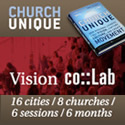Non-Evangelical Mega-Church: 5,500 Members Blend Science & Religion
- Posted by: Todd
- Posted on: Mon, May 26, 2008
- Viewed 92
- (26) comments so far
“The ultimate truth for us is that we live in infinite love and oneness,” Teel said. “We are all expressions of the divine.”
Colorado’s other 28 megachurches, defined as congregations of more than 2,000, share a main characteristic: evangelism and conservative Protestant theology.
Mile Hi doesn’t fit this mold, yet it resembles the Christian megachurches in other key ways, including success, if enrollment is any indicator.
One reason for the popularity of the nation’s more than 1,300 megachurches, which have more than doubled in number since 2000, is that they offer a positive message and a host of social and recreational activities, according to the Hartford Institute for Religion Research.
Megachurches are important community-building institutions for suburban Americans, who have experienced an extensive breakdown in traditional social networks in recent decades.
Mile Hi, for example, offers classes, concerts and guest speakers such as self-help gurus Wayne Dyer and Deepak Chopra. It has youth, singles and service groups.
Mile Hi has been steadily growing since its inception in 1959, said Teel, yet membership has taken off in the past 15 years. In the past three years alone, Mile Hi has grown by 24 percent.
Although there are 5,500 members, average weekly attendance for the three Sunday services is about 3,000, said church spokeswoman Karen Thomas.
Mile Hi is now the single largest church affiliated with the 80-year-old religious science movement. That movement, now rebranded as the United Centers for Spiritual Living, is moving its headquarters from Los Angeles to Denver in July.
You can read more here in the Denver Post...
An interesting article over the weekend at the Denver Post. It's about Lakewood, CO's Mile Hi Church. According to The Post: "It has 5,500 members, a modern auditorium, loud contemporary music, jumbo screens, a media store and a child-care center.
The trappings are the same. The message is not.
It is not evangelical Christian.
The motto under Mile Hi's big, domed sanctuary, a $10 million, 1,500-seat hall that opened in April, is "It's different here."
"We use some of the same approaches and tools as megachurches, but Mile Hi is profoundly unique," said senior minister Roger Teel.
Mile Hi Church teaches the science of mind and spirit. It seeks to blend science and religion — drawing from elements of all the world's great faith traditions. Christianity is just one of them...
Comments
if you want a Globally Recognized Avatar (the images next to your profile) get them here. Once you sign up, they will displayed on any website that supports them.






Peter Hamm on Tue, May 27, 2008
CS writes [You guys have to admit that there are some truths behind the formula that I listed above. ]
No I don’t. I do not think I’ve EVER known of a church that was founded solely on principles of method and practicality as you laid out. (I think you’re quietly implying that megachurches are founded for reasons other than spreading the Gospel, and I flatly reject such a notion.)
Did they think about what specific strategy and technology that they would use? Of course. That’s no different than deciding what hymnal and what version of the Bible to put in your pews.
CS, JOB, et al…
If you guys don’t see the “reactionary negativity” in your comments, but many others do, is it time to look at the things you say and the way you say them?
After all, if I’m told by everybody that I know that I’m a complainer, but I contend that I am not, but nobody (or nearly nobody) agrees with me, then perhaps… I AM a complainer!
JOB on Tue, May 27, 2008
Peter,
Do you comment on every post in this forum? I think the interests you are protecting, if they are truly of God, can withstand negative comments. Don;t you?
John
Peter Hamm on Tue, May 27, 2008
JOB,
I comment on many, sometimes most. Yes.
A negative comment that is constructive is one thing. But you seem to make it your mission to correct all of us who would call ourselves “purpose driven” and perhaps “seeker sensitive” as well. Your comments seem very much constructed to do that, such as this one.
[ It would be interesting to see an evangelical megachurch or two remove their modern auditoriums, loud music, jumbo screens, media stores and a child-care centers. Just rely on those statements of faith that are found on their websites. Then we can see where their faith really lies.] Did you really not mean something negative by that? Do you truly believe that these mega-churches have no faith? Do you believe they are all more dedicated to their music, screens, seats, and child-care centers? Your statement implies that very directly, and I’m not the only one, apparently, who thinks so. You honestly can not see why you are perceived as negative when you say things like that?
JOB on Tue, May 27, 2008
Peter,
And I’m not the only one that viewed this post in the same vain. Read the first 5 comments. So again why is my viewpoint “negative” and not yours? I really meant what I said. I would like to see it. Just an example. Stop offering child care. What is the harm? A family worshipping together? and the worst case a crying baby with there mother or father in a lobby? If a megachurch can be born without God (the one in the post) using the same mega-church methods we have grown to know I think it calls into question the methods. Doesn’t it? Not even a question Peter?
Peter Hamm on Tue, May 27, 2008
JOB writes [If a megachurch can be born without God (the one in the post) using the same mega-church methods we have grown to know I think it calls into question the methods.] No it doesn’t. There is no connection whatsoever.
I know of a VERY liberal church (I know of a few, but I’m particularly familiar with this particular one) which has a very “conservative” and “traditional” worship service, but wouldn’t even stop short of saying that all religions are the same and all people go to heaven. Does it call into question those traditional methods even though those beliefs are clearly not biblical? No, it only calls into question the particular statement of beliefs which is contrary to Scripture and basically all the creeds of the churches throughout the centuries.
The “methods” you mention of a large church with contemporary music, child-care facilities, big screens and big sound systems have nothing to do with their faith-statements or “message”. You seem to be lumping method in with message. (You’re not the only one who does.)
Stop offering childcare? Why? What would be the point, except to alienate those who worship with you who get to concentrate on worshipping God and hearing His word because somebody else was kind enough to take care of their kid for an hour or so.
CS on Tue, May 27, 2008
Peter:
“CS writes [You guys have to admit that there are some truths behind the formula that I listed above. ]
“No I don’t. I do not think I’ve EVER known of a church that was founded solely on principles of method and practicality as you laid out. (I think you’re quietly implying that megachurches are founded for reasons other than spreading the Gospel, and I flatly reject such a notion.) “
In addressing the latter point first, I believe the founding of most megachurches was to spread the Gospel, and will not deny that. Most of them started off as small, regular churches, too. Over time, many of them have diverged to a more self-help model similar to the “church” in this posting in Lakewood, CO, and that is where I take issue.
In addressing where you disagreed about how any church was founded according to the principles of method and practicality, let’s compare them to Willow Creek (which was brought up by others here, which shows that some people already had this in mind when they read this post without prompting):
1. Establish a building in a large, upper-middle class community.
South Barrington, IL, is one of the wealthiest suburbs of Chicago, with a median household income of about $170K.
2. Equip said building with the latest in multimedia, sound, music, and technology.
Over time (not immediately, I’ll admit), Willow Creek has developed this type of worship environment.
3. Find out what people want to have in a building like this in the community.
We’ve covered this before, but Hybels went door-to-door asking the unsaved what they wanted in a church, according to Time Magazine.
4. Deliver said requests, with promises of finding purpose / direction / fulfillment / happiness.
Refer to #3. Also include topics about “Financial Freedom” or “Secrets of Success in Turbulent Times,” for examples.
5. Deliver messages using modern topics and fads, including movies / books / television / games.
Their sermon, “Deal?” used the TV show “Deal or No Deal” for a drama title. And a series was entitled, “The Gospel According to TV,” which gave plenty of opportunities.
6. Add a little zing by Incorporating elements of topics such as sex / drugs / rock n roll.
Their series, “The Elephant in The Room,” included a sermon called, “In the Bedroom.” Others include, “Sex in the Suburbs,” and “Money, Sex, and Power.”
The “church” in question did similar things. Lakewood, CO, is near some pretty rich areas of Denver. They offer self-help sermons and classes. They have a huge building of which some people would be jealous.
—
CS
Peter Hamm on Tue, May 27, 2008
CS,
Last time on this for me…
[South Barrington, IL, is one of the wealthiest suburbs of Chicago, with a median household income of about $170K.] It also happened to be where they lived. Oh well…
[2. Equip said building with the latest in multimedia, sound, music, and technology.
Over time (not immediately, I’ll admit), Willow Creek has developed this type of worship environment.] So what! I know of churches that have spent six figures on a church organ.
[We’ve covered this before, but Hybels went door-to-door asking the unsaved what they wanted in a church, according to Time Magazine.] YOU’VE covered this before, where you take one quote from a secular publication to argue that this was Hybels’ entire M.O. in planting the church. It wasn’t.
[4. Deliver said requests, with promises of finding purpose / direction / fulfillment / happiness.
Refer to #3. Also include topics about “Financial Freedom” or “Secrets of Success in Turbulent Times,” for examples.] I’m still trying to figure out what’s wrong with preaching on ALL of our lives, including financial matters.
[5. Deliver messages using modern topics and fads, including movies / books / television / games.
Their sermon, “Deal?” used the TV show “Deal or No Deal” for a drama title. And a series was entitled, “The Gospel According to TV,” which gave plenty of opportunities.] I see nothing wrong with topical teaching. Jesus did some of that as I recall.
[6. Add a little zing by Incorporating elements of topics such as sex / drugs / rock n roll.
Their series, “The Elephant in The Room,” included a sermon called, “In the Bedroom.” Others include, “Sex in the Suburbs,” and “Money, Sex, and Power.”] Okay, maybe we should let people learn about sex outside the church where people tell us that whatever you want to do is just fine.
Sorry, CS, I think you’re nitpicking again.
Leonard Lee on Tue, May 27, 2008
There are less than 1500 mega churches in this country. There are nearly 400,000 churches in this country. Of those nearly 400,000 less than half will lead anyone to Christ in the next 12 months. Of those who do, the average church leads 1 person to Christ per 100 people in attendance. The average church attendance is about 85. That is less than 1 person per year.
I say go Willow, go Saddleback, Go other large churches. Go any church willing to speak the language of the culture and share the Gospel of the Jesus Christ. So what if mile high church uses prinicples of mega churches. Did you ever think that when an organization/organism gets to a certain size, different practices are needed?
JOB on Tue, May 27, 2008
“The trappings are the same. The message is not”
“trappings” Those are the articles’ words, not mine. There should never be “trappings” connected to the gospel. Everyone should agree with me on that. So my question is are there churches that are using “trappings”? We should most definitely ask that question.
Peter Hamm on Tue, May 27, 2008
JOB,
ttrap·pings [trap-ingz]
–noun (used with a plural verb)
1. articles of equipment or dress, esp. of an ornamental character.
2. conventional adornment; characteristic signs: trappings of democracy.
3. Sometimes, trapping. an ornamental covering for a horse; caparison.
I think it refers to the “style of presentation”, the way we frame and “dress”, if you will, our presentation, kinda like Jesus with the parables. No way not to have a style.
JOB on Tue, May 27, 2008
Peter,
Good job, Dr. Walter Martin would be proud, we are defining the terms. That always helps in trying to be on the same page. I’ll assume the writer had that definition in mind and concede my point was a poor one And yes Jesus had a style but he didn;t feed the 5,000 until they had listened to him all day, and later he really freaked them with something he said and they followed him no more, a lesson for some of our mega-churches ? do I have time to get into that ................. maybe another day.
God Bless, John
Page 2 of 2 pages < 1 2
Post a Comment